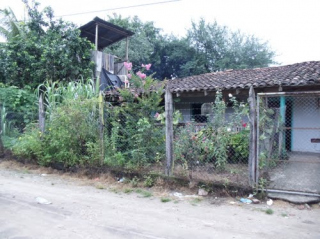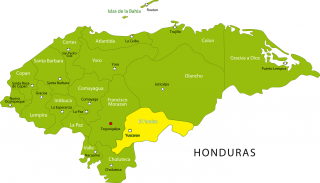Sartenejas, Honduras
![]()
![]()
![]()
![]()
![]()
![]()
![]()
![]() Click on Programs to learn more about their work in this community
Click on Programs to learn more about their work in this community
General Information
| Population* | 1,295 |
| Number of homes | 242 |
| Avg # of people per home | 5.4 |
| Number and % of children | 375: 29% of the population |
| Primary Occupations | Agriculture |
| Water System | Yes |
| Community Bank | No |
| Electricity | Yes |
| Corresponding Health Center & Distance | CESAMO - Zapotillo (20 minutes) |
| Common Illnesses | Common cold, respiratory infections, diarrhea |
| School Access and Distance |
Primary School - In community Secondary School - In community |
| GPS |
N 14° 11.026' W 086° 18.929 |
| Municipality | Danlí |
| Department | El Paraíso |
| Distance from compounds | 2 Hours |
* Population does not reflect how many patients will be seen on medical
brigades as many people from surrounding communities come seeking
Medical Brigades medical attention.
Top Needs Expressed
The top needs expressed by the key community members are economic development and more sources of paid work and an improved water system.


Sartenejas is located in the province of El Paraíso in the eastern region of Honduras. It is warm during the day and cooler in the evenings.
Like most other rural communities, Sartenejas has a primary school offering kindergarten-sixth grade. The school has 7 classrooms, but only 5 are in use as there are only 5 teachers. There are 120 students currently enrolled in the school. Children continuing onto secondary school must walk about 20 minutes to a nearby community.
Sartenejas currently has a functioning water system built by community members several years ago. The entire community is connected to it, thus enabling them to access a sufficient supply of potable water.
The system consists of a well and large chlorination tank.
Sartenejas does not have a Health Center in the community. The nearest health center is in Zapotillo, which is located about 30 minutes walking distance, and the nurse is Francis Quiñones. The community does not have access to dental care either; the nearest dentist is located in Danlí and the cost for attention makes it inaccessible to most people.
The most common illnesses seen by community members are diabetes, hypertension, and diarrhea and gastrointestinal problems usually associated with parasites. Approximately 82% of the community has latrines that currently function. No homes have eco-stoves. About 90% of the homes are estimated to have concrete floors and approximately 80% have pilas (water storage units).
The average family income per month is estimated to be approximately 600 Lempiras, which is about L120 (US $6.00) per person3. The majority of homes are made of adobe. The main form of employment in Sartenejas is agriculture on rented land, and the main products that are cultivated are corn, beans, and greens. Sartenejas does not currently have a caja rural. As such, they have expressed interested in learning more about microfinance and access to credit, and being trained to form a communal caja rural in which most members of the community can partake (they used to have a caja rural but it was assaulted and though the building still exists, the caja has disbanded). Currently, the only access to credit they have is through intermediaries and an outside banco comunal (community bank).
Community members in Satenejas are well-organized. They are led by a local government known as the patronato. They also have a parent-teacher committee in the school, a water council, a Catholic church, and an Evangelical church. Such organization bodes well in Global Brigades enters the community with more programs.
Check back soon for pictures!
Source of information: Key informant interview, Health Center statistics
Date of interview: 26 September 2012
1The accepted regulation frequency for chlorinating water is every 4 days.
2CESAMO and CESAR are terms used for types of health centers. CESAMOs are larger, more comprehensive facilities that usually have a physician on staff at all times and occasionally a dentist. CESARs are more remote, less equipped facilities, usually with 1-2 nurses on staff.
3According to Red Solidaria and World Food Programme in Honduras, the average family is approximated at 5 people per household, the poverty line is L930 (US$49.23) per person per month, and the extreme poverty line is L617 (US$32.66) per person per month.